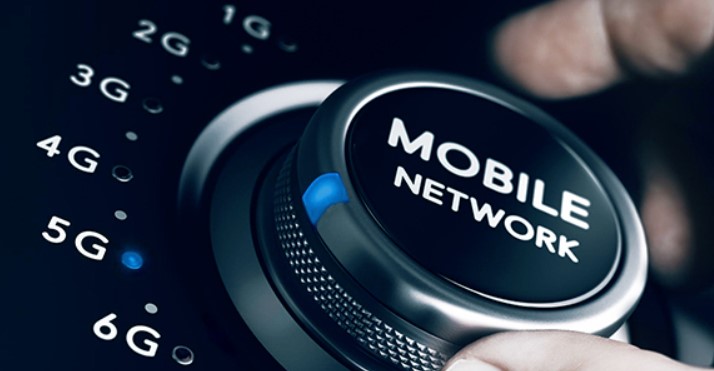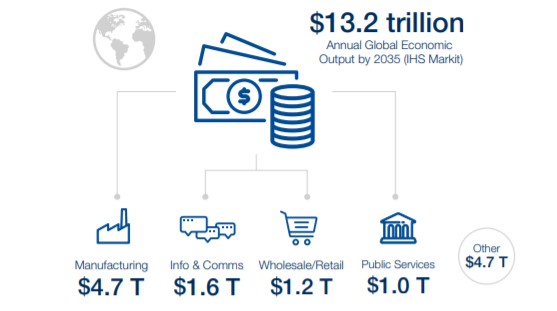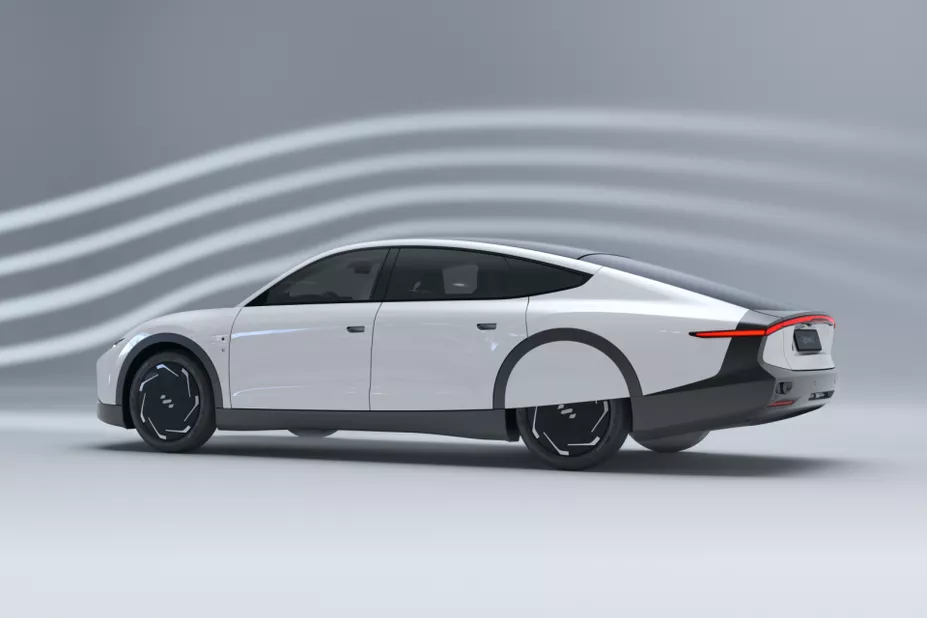What is 5G?
5G is the 5th-generation mobile network, designed to connect everyone and every device, including IoT and machines. 5G technology is the emerging telecommunications network that can enhance the features of existing 4G networks, by means of its astounding applications as enhanced mobile broadband (eMBB), reliable air-latency communication and massive machine type communications.
The successor to 4G tele network, is appraised for enabling higher downlink speeds (up to 20 GB/s), low air-latency, high capacity and providing a reliable wireless broad-band service to cellular networks.
The ultra-speed tele-network delivers the cellular connection by new radio waves (NR waves) and millimeter waves (mm Wave), which inhere high frequencies, accounting to a range between 600 MHz to 39 GHz which are competent of catering over a gigabyte speed downlink per second.
5G is the base to endorse future technologies like IoT, AR!
5G is also to proffer higher bandwidth, besides high frequencies, leading to a strong network over a cellular range, which competes with existing cable networks, to tender cellphones as internet service providers for laptops and desktop computers.
The network makes feasible other technologies like augmented reality and virtual reality by smoothening the network experience. Owing to its low latency, it enables remotely devices accessible easily, proffering the reach of IoT.
How 5G works?
5G is a digital cellular network, that works as the same of preceding cellular networks. The network’s providing service area are broken down to small geographical sections called cells. Each cellular device is connected to the nearest cell through an antenna. The analog signals (sounds, images and so on) are digitalized by converting it to digital bits using analog-to-digital converter. These bits are transmitted by means of an antenna attached in the provider to a transceiver in the cell, over a frequency channels assigned by the transceiver.
The signals in the 5G technology are sent off by a higher bandwidth and high frequency 5G NR waves and mm waves and beamformed to get a high range of availability. A mobile in motion experiences a shift of service provider from one cell to another, a term called ‘handed-off’, in telecommunications.
While 4G can withhold 1,00,000 devices per square kilometer, 5G could cover up to a million of the same range.
Origin of 5G
The industrial consortium setting standards and enabling 5G is the 3rd Generation Partnership Project (3GPP), which encloses several standard organizations, developing protocols for mobile telecommunications.
The firm is responsible for the existing and preceding generations of cellular networks namely:
- 2G – GSM, GPRS & EDGE (enabling digital voice) in Early 1990s
- 3G – UMTS, HSPA & HSPA+ (mobile data) in Early 2000s
- 4G – LTE, including LTE Advanced & Pro (mobile broad-band) in Early 2010s.

5G is a unified, more capable air interface. It has been designed with an extended capacity to enable next-generation user experiences, empower new deployment models and deliver new services.
What highlights 5G?
5G technology is about to dominate the prevailing networks due to its characteristic abilities. 5G congregate three divisions in it with respect to the bandwidth viz, low, mid and high band 5G networks. The divisions concern of adapting the technology to the pertaining network, in the cases of inability to plant a full fletched 5G network.
While low bands render NR signals of 600 – 700 MHz bandwidth (few above 4G bandwidths), mid and high band widths provide NR & mm Waves of 2.5 GHz to 3.7 GHz and 25 to 39 GHz respectively. The features lead to high data-rates up to 20 GB/s.
You can now download a full 8K movie 500x faster than 4G LTE with 5G
In addition to high data-rates, the air-latency of the network is considerably negligible, enabling an immediate response, enhancing the user interface and offering a uniform overall experience, at times of even the devices are idle / moving around. Extending the spectrum of network to mm Waves, 5G is designed to provide much more network capacity, to a million devices.
5G Applications
The massive network’s applications have its pronouncing application in three mediums:
Enhanced Mobile Broadband (eMBB)
As the technology can proffer downlinks upto GB/s, 5G mobiles can be a network service provider to other devices. The technology also braces the experience of the rest emerging techs like augmented reality and virtual reality, bringing down to a smooth and higher quality user interface. Your mobile can be the broadband to other gadgets in your home.
Ultra-Reliable Low Latency Communication (URLLC)
URLLC suits for business or organizational usage of network, where an uninterrupted, uniform data availability is obliged. The research and tests showcase that air-latency of the tech approximates 8-12 milliseconds, which is much lesser than other generations.
Massive Machine Type Communication (mMTC)
The bandwidth and spectrum of 5G accredits of connecting large number of IoT devices. 5G can connect some of the 50 billion 5G connected IoT devices. WiFi enabled Drones, can be manipulated through mobiles, with the advent of 5G.In short,
Your Mobile can be the ultimate controller of things.
Security & Power efficiency:
5G Creates an ultrareliable connection to support applications with robust security, high reliability where failure is not an option. It compensates the efficient power requirements for massive multiple-input, multiple-output (MIMO) and small cell implementation, leading to lower costs and enables massive internet of things. Apart, 5G would enhance the mobile ecosystem dilating to other sectors, boosting the overall usability and applicability of the technologies.
Epilogue – Economic Impact of 5G

Significant economic and social value can be generated by enabling use cases activated by 5G. An IHS Markit study1 estimates that $13.2 trillion in global economic value will be made possible by 2035, generating 22.3 million jobs in the 5G global value chain alone.
Few countries had already started of the technology and the feedbacks always highlights. There’s no surprise to witness the influences of the network within the next five to ten years.

Now, India’s Airtel, Jio, Vodafone Idea too started 5G trials, which they about to implement in the first quarter of 2022.
The only drawback of the tech is the range restraints due to the increased frequency of the NR waves. This requires fixation of cells, more frequently to every few hundreds of metres. However, the tech’s prevalence magnifies the business, working and communications greatly, which makes its drawbacks a peanut.
Do I need a new device for 5G?
Yes. Smartphones are specially designed to apprehend 5G. For example, smartphones powered by the Snapdragon X55 or Snapdragon X60 Modem-RF System are 5G compatible.
References:







Pingback: Everything you need to know about “Internet of Things (IoT)” – The Inner Detail